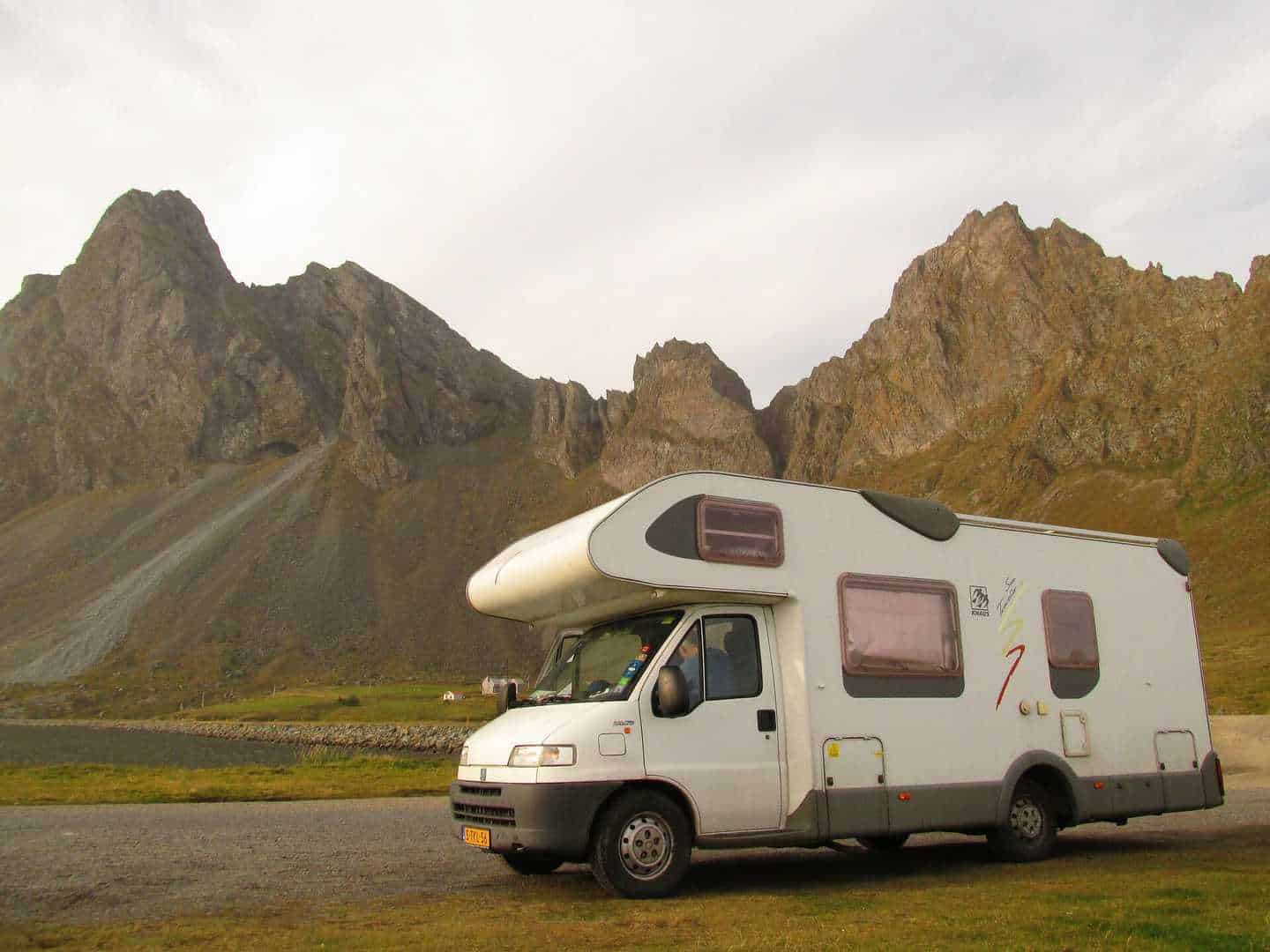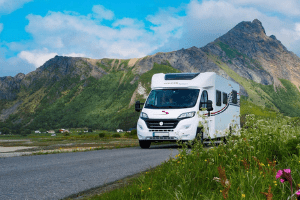Owning a motorhome can be a labour of love – more working parts and components than your average vehicle means more care and maintenance is required, but the pay-off is that you get all the freedom of the open road and can go wherever you want, whenever you want.
The roof is one area that can easily be neglected though, especially if you have a larger motorhome or even a high top campervan – it’s essentially out of sight and out of mind. But if you have a damaged or leaking roof, not only could this instantly lower the value of your motorhome, it could lead to all sorts of serious issues, such as damp or damage to the internal fixtures and fittings.
Here’s how to spot damage to your motorhome roof, and repair any problems before they get out of hand.
How to spot damage to your motorhome roof
There are any number of ways your motorhome roof could be damaged, from falling debris on a rocky mountain road to simply scraping it along low-hanging tree branches. The only way to spot the signs of this damage is to physically get up on the roof itself – once it’s pouring into your kitchen, it’s all too late.
You should check your motorhome roof at least once before every journey and definitely before you park it up for any prolonged period of time. When checking for damage, you need to make sure the roof is strong enough to support your weight. As a general rule, if there’s no ladder leading up to the roof, it probably isn’t safe to stand on. If this is the case, place some wooden boards down to evenly distribute your weight.
Once up, check for any scuffs and scrapes, and make sure there’s no damage to any seals, including those on windows and skylights. It’s also worth washing the roof while you’re there – here’s how.
How to clean a motorhome roof
To clean the roof of your motorhome, firstly give it a thorough hosing down to remove any loose dirt and grit – the last thing you want to do is grind any loose grime into the paintwork – before taking a long-handled brush to apply cleaning fluid in horizontal strokes, applying extra pressure where necessary to remove more stubborn marks and any residual grime that could cause mould or damp.
Once the roof has been fully scrubbed, give it a second hosing down, repeating this washing and rinsing cycle until the roof is spotless.
If you have solar panels on the roof of your motorhome, these will need extra care and attention, as grime and dirt can gather underneath them. To make sure your solar panels are spotless, you’ll have to get up close and clean around the seals using your small cleaning brush with plenty of soapy water. Then hose around it to get rid of any residual grime, before giving the roof a final hose down.
How to DIY repair your motorhome roof
If you’ve spotted any problems on the roof, you should immediately get to work and start repairing them.
How to repair a fibreglass roof
If your motorhome has a fibreglass roof and there are rips or tears in it, you’ll need to patch it up with fibreglass repair tape. To do this, you’ll first need to spread sealer completely over the damaged area, before laying the fibreglass tape over this patch. You should then cover the patch with more sealer and leave to dry.
Once the roof has been repaired, clean it by using acetone to get rid of any oil and grease, before giving it a thorough scrub down with a sponge and warm water. Once the roof is dry, apply wax using a soft cloth in a circular motion, and let it dry before buffing to a shine.
Next, you’ll need to add polish, again using a soft cloth in a circular motion, but this time work it into small areas and pay particular attention to any marked or pitted areas. Apply the polish until the surface becomes glassy. This should ensure your fibreglass roof is back to its best.
How to repair a rubber roof
Rubber roofs tend to be more hard-wearing than others, but need to be properly maintained to get the most out of them. The main issue with rubber roofing is that it can crack, if your roof looks like it’s beginning to show these signs of wear you’ll need to reseal it using a rubber roof liquid that offers a flexible waterproof coating, such as Dicor.
First apply the primer provided with the coating, before applying two coats of the motorhome roof sealant. To seal roof joints, use a self-levelling sealant such as Sikaflex, which will need to be applied with a caulking gun.
Once the work is done, avoid future water damage by checking the seams every year and touching up any cracks with the sealant.
When washing a rubber roof, only ever use soap and water and make sure you never use any petroleum-based cleaning products as these will cause irreparable damage and your roof will look loose and swollen.
How to repair a metal roof
If your motorhome has a metal roof, which is often the case for older motorhomes, the good news is they are much less hassle to reseal and only need waterproof motorhome roof paint to get them back to their best.
If you need to repair any structural damage, you can fix the seams using Eternabond seam tape. This is essentially really resilient duct tape and is worth carrying in your motorhome for emergency repairs. You need to take care when using it though, as once it’s laid you won’t be able to peel it off again. Before applying Eternabond, thoroughly clean the roof and lay the tape carefully over the affected areas to create a well-sealed bond. You can then paint over it, using your motorhome roof paint.
How to maintain your motorhome’s roof
Motorhome roof maintenance is essential to ensure you prolong the life of your vehicle and get the very best out of it. Although fitted with hardwearing materials designed to stand the test of time, these will degrade with age, as oxidation and UV rays take their toll, and will deteriorate even more rapidly if not properly looked after.
One simple but effective way to protect against the elements is to fit a motorhome roof cover. Covers come in all shapes and sizes, are designed to fit all types of motorhome and stay in place in all weathers, to protect against the elements, as well as leaves, tree sap and bird droppings – all of which can do some nasty damage to the roof of your motorhome. A motorhome cover is essential if you’ll be storing your vehicle outside in extreme weather conditions.
Regularly check your motorhome roof for signs of wear or damage, at least every few months, and if you see any small cracks, make sure you repair them as soon as possible – even the smallest bit of damage can quickly become a big problem.
Ideally, you should reseal your motorhome every five years, regardless of any damage, but if your vehicle is still under warranty, check the terms and conditions before you carry out any work, to make sure you don’t invalidate any manufacturer’s guarantee.
It’s also worth checking if the warranty says anything about cleaning the motorhome, particularly if it has a rubber roof – as mentioned above, using petroleum-based cleaning products can do serious and lasting damage, which definitely won’t be covered as part of any warranty.
How to get the right motorhome insurance at the right price
Whether your motorhome is brand new or has been around the block a few times, it’s important to make sure it’s fully insured whether it’s on the road, on the campsite, or on the driveway.
To find the right policy to suit your needs, give our motorhome insurance or classic campervan insurance experts a call on 0208 9840 666 – our unrivalled choice of policies is what helps 95% of our customers rate our service as ‘Excellent’ on Trustpilot with a customer satisfaction score of 4.9 out of 5.*
*September 2019













